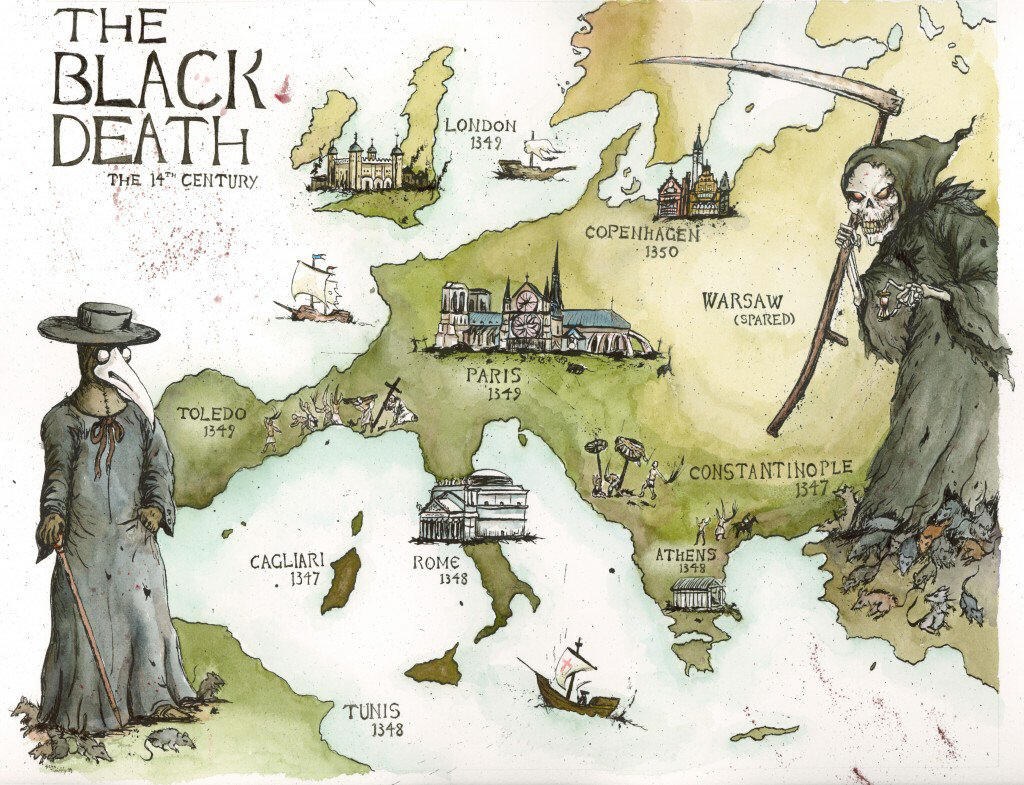2. On a new page use headings and sub-headings as
you complete the 4
Activities on the following site:
blackdeathEXpdf.html
(From:https://www.theblackpooltower.com/downloads/school-resources/dungeons-schools-resource-the-plague.pdf)
a) For
Activity 1,
use the heading: Symptoms of the
Illness.
Then put the list of symptoms given
into the order that you think a sufferer
would have experienced them.
b) For
Activity 2a, use the heading: How People
Tried to Cure the Plague.
Then select and write out four
cures you think they would have used.
c) For
Activity 2b, use the heading: How People
Tried to Prevent Getting the Plague.
Then select and
write out three prevention methods you think the people
would have used.
d) For Activity
3, use the heading:
The London Doctor's Letter. Google image search for
a 'scroll' on which you could write your letter. Insert
a text box and then right mouse click the box and select
'format shape' so you can make the text box over the
scroll transparent. Also you could select an old
fashioned type of text to write your letter with, such
as 'Pristina' or 'Brush Scrip'.
Sample Scroll. Paste your letter in your book.
e) For the last activity on Pupil
Worksheet 4, use the heading:
Comparison Charts. Working with a partner, print out
and cut up the sheet of cards and then sort the cards into
'Causes' and
'Effects of the Plague'. List these in your book in a
small chart: have one column for 'Causes' and one for
'Effects'. Following this, sort the cards into 'Long'
and 'Short-Term Effects of the Plague'. List these in
your book in a small chart: have one column for 'Long-Term
Effects' and one for 'Short-Term Effects'.
f) Using information provided on the above site, explain why people
called the plague the Bubonic Plague. |
3. a) Watch this second brief video about the
plague:
http://www.history.com/topics/black-death/videos/coroners-report-plague?m=528e394da93ae&s=undefined&f=1&free=false
OR
https://www.youtube.com/watch?v=OyQ11oCSQDY
As you watch the video jot down 4 or 5 key points under the
heading: The Different Types of Plague.
b) The Black Death: Glossary
and Terms Activity. Print off and paste this in your
book when complete. |
4. a) Complete the activity from this site:
http://edsitement.neh.gov/sites/edsitement.neh.gov/files/Black_Death.swf
See if you can draw on the
interactive map the different coloured lines that show
where the plague spread. Also try and find the dotted
lines that show the different trade routes. (Don't
answer the questions posed on the site.)
(You can download this swf file player if it is not on
your PC:
http://www.softsea.com/download.php?id=836779451 )
b) Using
this blank map
label the
different countries and main cities. Use one colour to draw on your map
where the plague spread. Use a different colour to draw
one of the trade routes. Use a key to explain these.
Also label the Black Sea, the
Mediterranean Sea and lightly shade all the water areas of the map with
a blue pencil. (When
completed, paste the map in your book.)
Also write the arrival date
next to the first European city to get the plague.
c) What does the
mapping exercise tell you about the source, and the direction the plague
took when spreading across Europe?
(‘source’ = where it first landed and started from in Europe.)
d) Play this
Interactive Map - on the Spread of the Black Plaque.
Is there any indication that the spread of the plague quickened
as it spread across Europe, or was it constant or did
it seem to slow down at any time?
swf file player |
5. Watch this video:
http://www.history.com/topics/black-death/videos/black-plague-extinction
OR
https://www.youtube.com/watch?v=HDRAyPEqtrk
Then use full sentences and quoted words when
answering the following questions:
a) Who
disposed of the dead bodies?
b) List 3 ways
in which they disposed of the bodies.
c) According
to the video, what did many
people start to believe when so many people started to die? |
6. Look at the four black and white picture sources
across to the right on this page. (Not the rat!)
a) Briefly describe the three illustrations across to
the right of this page that are drawn in an old
style suggesting that they are copies of original
primary sources.
b) Briefly describe the picture that looks to have a
modern style suggesting it is a secondary source.
c) Look at the black and white drawing of a street
scene. What do you think the two men in the background
of the illustration are doing with the cart?
d) In this scene how would you describe the reaction of
the people and the dog to the man who has collapsed in
the street? Explain why you have that view.
e) Find the ten people in the picture. Are any of the
people doing something that
suggests there were
no organised garbage collections in this Medieval city?
f) What else can you see in the illustration to suggest
that medieval city streets were very unhygienic and did
not have underground drains to take away dirty water?
g) Research Challenge: Google ‘the
first toilets and sewage systems’. (I) Find out when
approximately after the start of the Middle Ages, were
the ‘first organised human waste removal services’
introduced into European cities. (II) How did the human
waste removal system operate? (III)When did sewerage
systems with flushing toilets and underground pipes
start to be used in Europe? (IV) Find and paste in your
book an illustration or picture related
to any early efforts made by Town or City officials to
try and improve the sanitation system for
better public health and hygiene.
|
7. Explain how the following article argues a new
theory about how the plague spread.
Quote from the article in your answer.
Remember to write the name of the author of the article, and when it was
written.
http://www.history.com/news/medieval-black-death-was-airborne-scientists-say
|
8. Using the following site, make a list of the
different beliefs people had at the time, for what was
causing the
Plague. Use the heading: What People Thought was
Causing the Plague.
http://history.howstuffworks.com/historical-events/black-death1.htm
|
9. From this site:
http://history.howstuffworks.com/historical-events/black-death2.htm
a) List
the various methods people used to avoid getting the plague.
b)
Explain what the Flagellants believed and describe how they acted.
c)
What group of people were blamed for causing the plague and were often
killed with fire? |
| 10. Old Cures for the Plague. Using the information from the following site
design a coloured mind map on a new page that shows the different cures people used during the Middle Ages and
Renaissance period to try and cure the plague:
http://www.enkivillage.com/cures-for-the-black-death.html
|
11. Study the map below. Look at the dates of the
different outbreaks of the Plague.
According to this map which country had the first outbreak of
the Plague?
12. Does the information on the following site corroborate (agree with) the information given on the map about where the
plague originated in the 1300s. Quote from the website in your
answer.
http://goo.gl/cVEfe4
(
https://www.livescience.com/2497-black-death-changed-world.html ) |
|
|
 |
|
 |
|
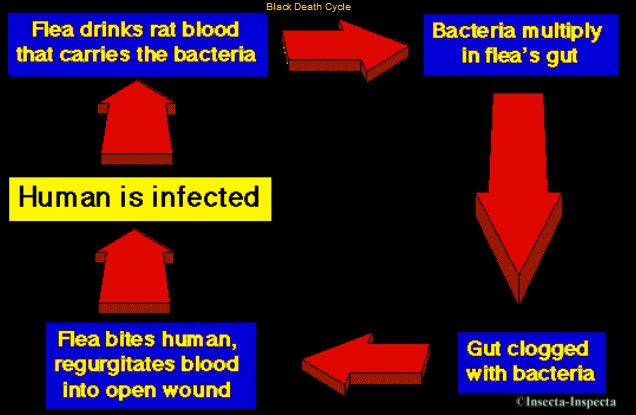 |
|
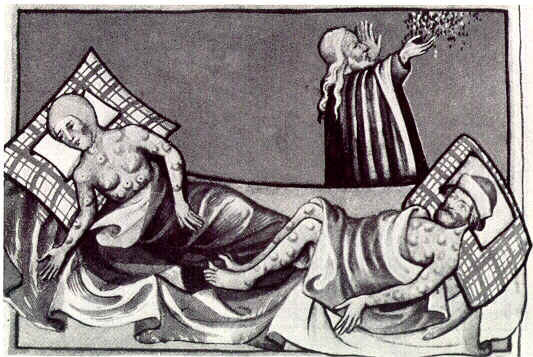 |
|
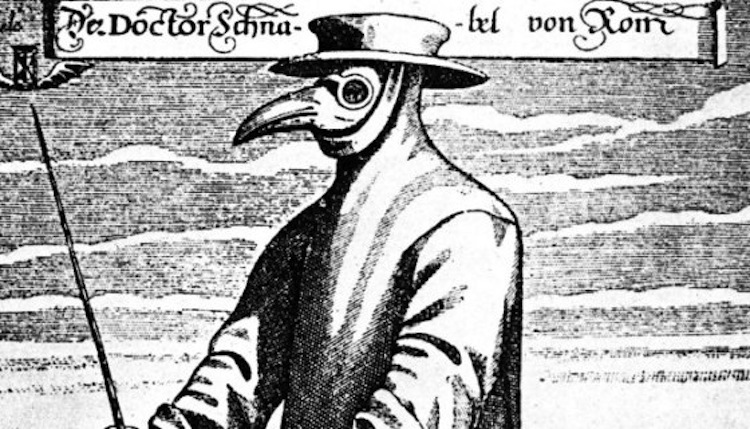 |
|
13.
a)
Research and
then write in your book a description of the strange
costumes the
Plague
Doctors
wore
in the Middle Ages. b)
Explain why they wore the large, leather
bird-like beaks with red glass beads for
their eyes.
c)
List
the medical procedures and medicines
they used. d) Print and
paste a small picture of a Plague Doctor
into you book.
|
14. a) Draw in your book the flow chart diagram with the red arrows
that explains how humans were infected.
b) How does the following site explain the cause of the
plague? :
http://history.howstuffworks.com/historical-events/black-death4.htm
(‘regurgitate’ = to vomit back up food that has been chewed and
swallowed.)
|
15.
Draw up a new
page in your book with the heading:
‘Black Death Video Quiz’.
As you watch the following video, write
out 5 questions based on the video. On
your page leave three line spaces
between your questions for the answers.
After you have watched the video and
written out your questions, swap books
with the student next to and then answer
each other’s questions.
When the questions have been answered,
swap books back, the mark your partner’s
answers giving each answer a value of 2.
Then record their total mark out of 10.
https://www.youtube.com/watch?v=5hBOqGC1BLw&feature=youtu.be
Other videos:
https://www.youtube.com/watch?v=P8kAnC5m4oc
https://www.youtube.com/watch?v=HcEllXY76W4
|
|
|
|
|
| |
|
| |
|
16. Pied
Piper of Hamelin
(German: Rattenfänger
von Hameln also
known as the Rat-Catcher of Hamelin) is the subject of a legend from the town of Hamelin,
which had been attacked
by plague. The events
took place in Hamelin
which is in Lower
Saxony,
Germany, in the Middle
Ages.
The earliest references
describe a piper,
dressed in multi
coloured ("pied")
clothing, who was hired
by the town ….
The first record
of this story is from
the town of Hamelin
itself, depicted in a
stained glass window
created for the church
of Hamelin, which dates
to around AD 1300.
Although it was
destroyed in 1660,
several written accounts
have survived.
(From:
https://en.wikipedia.org/wiki/Pied_Piper_of_Hamelin)
a) At the following
site, just click through
and look at the
different illustrations
of scenes from the story
of ‘The Pied Piper of
Hamelin’.
http://www.indiana.edu/~librcsd/etext/piper/
b) At the following site
read the story of ‘The
Pied Piper’ and then
complete the quiz
activity.
c) Record in your book
the score you gained at
the end.
d) Why do you think this
legend of the piper,
originally had something
to do with the Black
Death which was sweeping
through Germany at the
time?
e) Imagine you are
talking to a person who
has never heard the
story of the Pied Piper.
Write in just four or
five lines a ‘potted
version’ or brief
account of what the
story is about and what
happens in the story.
http://www.lancsngfl.ac.uk/curriculum/literacy/lit_site/html/fiction/Pied_Piper/start.htm
|
 |
|
|
|
17. More
than just a Nursery
Rhyme.
Have you ever heard the
nursery rhyme called
‘ring around the rosie’?
"Ring around the Rosie.
Pocket full of poesy.
Ashes, Ashes, we all
fall down."
This nursery rhyme is
actually about a disease
from the 14th century
that the people called
the plague or Black
Death. This disease was
highly contagious. It
spread across Europe. It
was so widespread and so
deadly that it is
estimated to have killed
one fourth of all the
people in Europe.
If you break down the
poem you can actually
understand the effects a
bit more.
"Ring around the Rosie":
Infected people broke
out in a rash on their
arms and neck that had
red ring shaped marks
with a dark center spot
that looked like a rose.
They would then get a
high fever, become
unconscious, and finally
die.
"Pocket full of posey":
People carried flowers,
often posies, to cover
the smell of the dead
and dying.
"Ashes, Ashes": People
would burn the houses of
people with the disease
in order to try and stop
it. Whole villages were
burned down. The sky was
dark with the ashes of
the burnt buildings.
"We all fall down": The
plague filled villages
and cities alike with
dead and dying victims.
People would collapse in
the streets and be left
lying there. People were
afraid to touch them or
go near them.
(http://medievaleurope.mrdonn.org/plague.html)
a) What are ‘posies’?
Google
image search 'posies
of flowers'?
Select one you
could imagine a person carrying in their hand.
Print a small image of
this to paste in your
book or draw, colour and
label a small image of
it in your book.
|
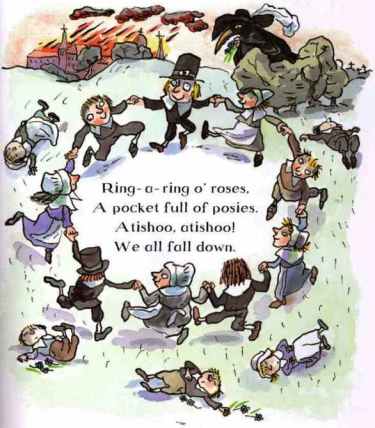
|
|
|
| |
b) Write a mini
half page
article for a
magazine.
Topic:
How children’s
stories and
legends from the
past may have
some original
basis in
historical
facts.
Make up your own
interesting
title for your
article.
|
In your article
you could
briefly mention
writing for
children or
legends from the
past such as:
The story of the
wooden horse in
the battle of
the ancient
Greeks against
Troy - Was there
really a great
battle at an
ancient city
called Troy?
(Search for the
finds of the
archaeologist
Schliemann); The myth
of Theseus, who
in a giant maze battled the
minotaur beast
with the head of
a bull -
Could this
legend have its
origins on the
island of Crete,
in the giant
Minoan palace at
Knossos
that
could
have
seemed
to some
like a |
giant
maze?
The
Minoan
priests
also
worshipped
bulls
and some
believe
their
priests
wore
bulls
heads in
their
religious
rituals.
(Search for the
finds of the
archaeologist
Arthur Evans);
The lost City of Atlantis
- Could
this legend have
its origins in
the massive
volcanic
eruption and
destruction of
the civilisation
on the island of
Thera? ; and
finally the
story of the
Pied Piper; and
the nursery
rhyme of
Ring
Around
the
Rosie. |
|
| |
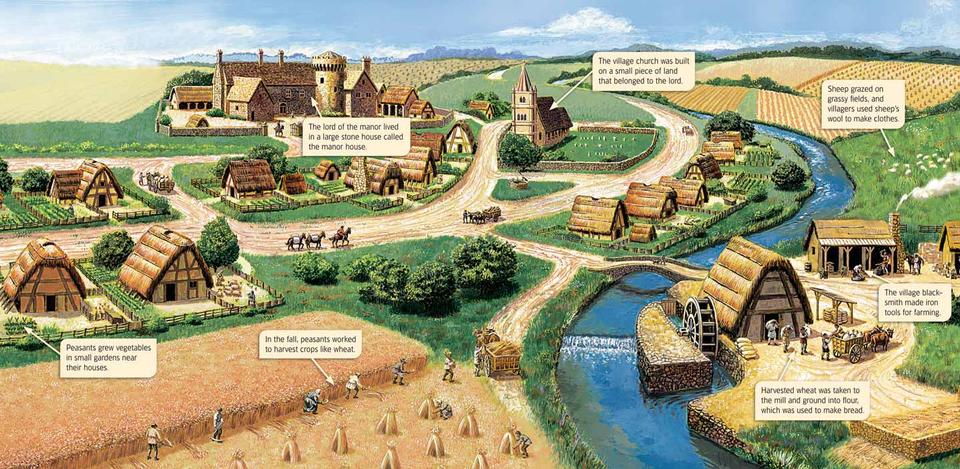
|
18. In The Countryside
a) Study the above picture of a Lord's domain before the plague ravaged the land during the Middle Ages.
If you were a farm worker in this scene what building would you visit if you needed a repair made to an iron plough?
|
|
|
b) A Villein (villain) or Serf was a term used in the feudal era to denote or refer to a worker (tenant farmer) who was legally tied to a Lord of the manor.
Peasants were above Serf or Villeins in the social structure because peasants owned their own land or rented land off the Local Lord. A peasant was free to leave at any time. The Serf of Villeins were legally tied or bound to the Lords domain or lands.
In the Middle Ages, Serfs or Villeins who occupied a plot of land were also required to work for the lord of the manor who owned that land, and in return were entitled to protection, justice and the right to exploit certain fields within the manor to grow their own food.
The Lords manor formed the basic unit of feudal society, and the lord of the manor and his serfs were bound legally, economically, and socially. Serfs formed the lowest social class of feudal society.
(From: https://en.wikipedia.org/wiki/Serfdom)
Using the information above explain in your own words what the differences were between the Villein or Serfs and the Peasants?
|
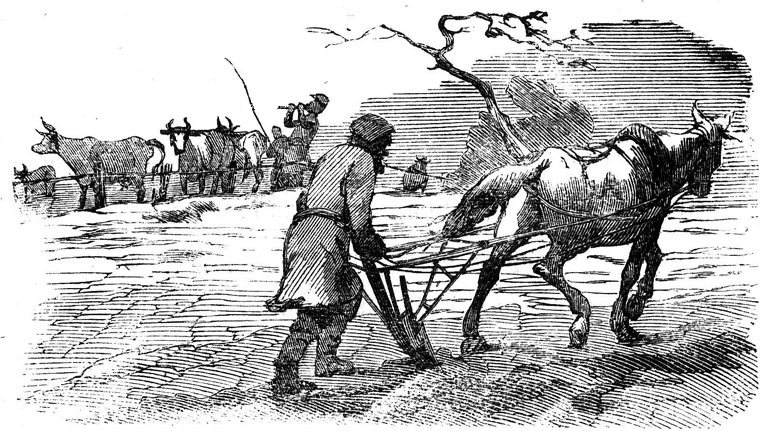 |
|
19. The Social, Economic and Political Results or Effects of the Plague.
The Black Death claimed anywhere from one third to half of the population in Europe. Some experts think that one fifth of the world population at the time were killed, while some argue that it was actually one third of the population. The massive death toll meant that the way society was organised had to change if life was to go on.
After the Black Death, social structures weakened and changed — partly because as time went on the peasants became more valuable to the nobles for the work they needed to do such as planting or harvesting the crops, tending the animals and all the other crafts that needed to be done.
The huge death toll meant a smaller work force, and the peasants who had survived could demand higher wages or they would leave and go to another Lords domain or to one of the towns. Wages for peasant labourers doubled in the 11 years after the plague.
|
Matteo Villani, who lived in Florence (Italy) during the time of the plague, describes what life was like during and after the Black Death. After reading the source, respond to the following question.
“Men dreamed of wealth and abundance in garments and in all other things … beyond meat and drink; yet, in fact, things turned out widely different; for most [luxury] commodities were more costly, by twice or more, than before the plague.
And the price of labour, and the work of all trades and crafts, rose in disorderly fashion beyond the double.”
a) According to Villani how did the Plague affect the price of luxury goods and the wages for workers? In your answer quote two or three words from Villani and blend his words into your own sentences.
|
|
In 1351 King Edward III made a new law, called the Statute of Laborers.
It stated that peasants could not receive wages that were more than they had been paid before the “pestilence” (plague). The nobles had complained to him that peasants were demanding to be paid more and were leaving their villages to travel to new jobs where they were getting higher wages:
“Because a great part of the people and especially of the workmen and servants has now died in that pestilence, some, seeing the straights [problems] of the masters and the scarcity of servants, are now not willing to serve unless they receive excessive wages …
Every man and woman of our kingdom of England, of whatever condition … shall take only the [old]wages liveries, meed or salary which, in the places where he sought to serve, were accustomed to be paid in the [past]twentieth year of our reign of England.”
b) What reason did King Edward III give for making the law called the Statute of Laborers? Use some of the Kings words in your answer. |
Henry Knighton, a man who lived through the Black Death described its immediate effects in his book 'History of England from the 14th Century':
“Sheep and cattle went wandering … and there was no one to go and drive or gather them … many crops perished in the fields for want of someone to gather them.
But the peasants were so lifted up and obstinate that they would not listen to the king's command, but if anyone wished to have them he had to give them what they wanted, and either lose his fruit and crops, or satisfy the wishes of the workmen.
After the pestilence, many buildings, great and small, fell into ruins in every city for lack of inhabitants, likewise many villages and hamlets became desolate … it was probable that many such villages would never be inhabited.”
c) What evidence is provided in the above source that the English King's new law was not very effective? Start your answer with the words:
'According to Knighton....' |
|
|
20.
Plague,
War and
Taxes....More
Problems
for the
Peasants
Read the
following
brief
description
by the
contemporary
French
writer Froissart.
He is
describing
a
strange
movement
he saw
in 1349:
"In
the Year
of Grace
1349,
the
penitents
went
about,
coming
first
out of
Germany.
They
were men
who did
public
penance
and
scourged
themselves
with
whips of
hard
knotted
leather
with
little
iron
spikes.
Some
made
themselves
bleed
very
badly
between
the
shoulders..."
(http://www.historyguide.org/ancient/flagellant.html)
a) What
were
these
groups
of men
called
and why
were
they
whipping
themselves?
The
discontent
of the
French
peasants
had been
growing
for many
years:
The land owning Nobility had been increasing the peasant's taxes. Also
those
with
villein
status
were
still
expected
to do
unpaid
work on
the
Nobles
estates
even
though
their
Nobles
did not
protect
them
from
violent
English
and
German
mercenaries
that
were
plundering
the
countryside.
In the
following
account
Froissart
describes
what
happened
when the
local
peasants
rebelled,
and
using
farm
tools as
weapons,
led an
angry
march
into a
French
town in 1358.
(The
rebellious
peasants
were
given
the name
Jacquerie.)
“Men-at-arms
[Knights
or
soldiers]of every
kind
burst
out of
the
castle gates
and ran
into the
square
to
attack
those
evil men
[the
peasants].
They
mowed
them
down in
heaps
and
slaughtered
them
like
cattle;
and they
drove
all the
rest out
of the
town,
for none
of the
villeins
attempted
to take
up any
sort of
fighting
order …
Never
did men
commit
such
vile
deeds
(as
those
Jacquerie);
I could
never
bring
myself
to write
down
what
[the
peasants] did
… God by
His
grace
provided
a remedy
… The
nobles
wiped
them out wherever
they
found
them,
without
mercy or
pity.”
b) List
three
reasons
why the
French
peasants
were
rebelling.
c)
There
were
reports
that the
peasants
had
badly abused
and
then killed
some of
the
Nobility.
What
evidence
is there
in the
above passage
that
these
reports
might
have
been
true? In
your
answer
quote
two or
three
words
from
Froissart
and
blend
his
words
into
your own
sentences.
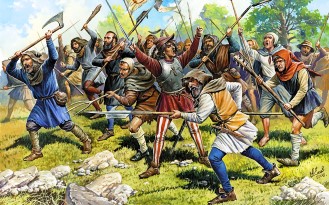
d) According to
the
painting
in Froissart's chronicle how did the Noble's men-at-arms dispose of the bodies of the peasants they killed?
|
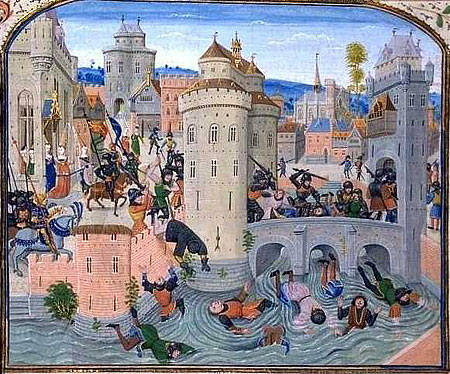
This
image:
‘Defeat
at
Meaux’
is an
illustration
from
Froissart’s
chronicle
of what
happened
when
peasants
rebelled
in a
French
town
called
Meaux.
(From:
https://www.qcaa.qld.edu.au/downloads/p_10/ac_sa_hist_yr8_black_death.pdf)
|
| |
The
following
is a
passage
from a
speech
by
John
Ball
in 1381.
Ball was
a priest
who
protested
against
the way
the
peasants
were
treated
by the
nobles.
He
travelled
throughout
England
speaking
to
peasants
about
the
injustices
in
society:
“Good
people,
things
cannot
go right
in
England
and
never
will,
until
goods
are held
in
common,
and
there
are no
more
villeins
and
gentlefolk,
but we
are all
one and
united.
In what
way are
those we
call
lords,
greater
masters
than
ourselves?
If we
all
spring
from a
single
father
and
mother,
Adam and
Eve, how
can they
claim or
prove
they are
more
lords
than
us?”
(From:
https://www.qcaa.qld.edu.au/downloads/p_10/ac_sa_hist_yr8_black_death.pdf) |
| |
e) Discuss with a partner what you think John Ball saw as the injustices in English feudal society. Based on the above sources, do you think
King Edward III or
Froissart
would have agreed with the views expressed by the priest John Ball?
Start your answer with the words: 'There is evidence in the sources to suggest that....'
At about this time there were so many battles and small wars between England and France that Historians refer to them as 'The Hundred Years War'. As the Kings needed to raise money to pay for soldiers and war supplies, they had been raising taxes from their subjects and Lords across the land. The Lords in turn had been taxing the peasants. It was worse in France as the French Nobility themselves never had to pay taxes. It was often while the Lords Knights and men-at-arms were away at war that the peasants turned their years of resentment and suffering into open revolt and rebellion.
f ) Find out and record the start and end date of the Hundred Years War.
g ) What were the circumstances that led some peasants to think they could stage a successful rebellion against their local Lord and land owners? |
|
|

Optional Extras: 1. See
how well you score in
this
fun trivia quiz about
the Black Death.
♣
iiIIIIIIIIi
|
|
|
